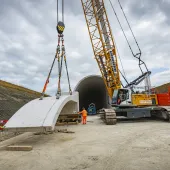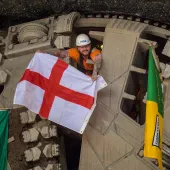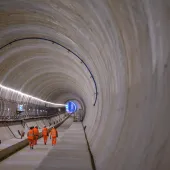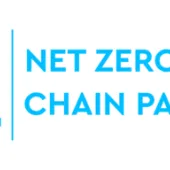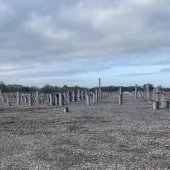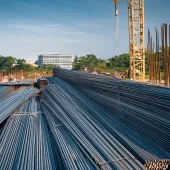Video: Final segment cast for HS2’s Chiltern tunnel
The Align JV has cast the 112,350th and final segment for HS2’s 16 km-long Chiltern tunnel.
With all the concrete tunnel lining segments now produced, Align’s Tunnel Boring Machines (TBMs) ‘Florence’ and ‘Cecilia’ can complete their respective tunnels.
Made of high-performance fibre-reinforced concrete, the first of 112,350 wall segments for the Chiltern tunnel rolled off the Align JV’s purpose-built, pre-cast factory next to the TBM launch pads at what will be the south portal of the tunnels, close to the M25, in March 2021. This avoided putting extra HGVs on local roads and ensured a steady supply of segments for the TBMs.
Each Chiltern TBM is a 170m long self-contained underground factory, digging the tunnel and lining it with 56,000 concrete segments to form rings, and grouting them into place as it moves forward.
Designed specifically for the geology of the Chilterns, the machines were launched in the summer of 2021 and have excavated approximately 2.8 million cubic metres of chalk and flint.
Each of the 2,000-tonne machines has spent more than three years underground, digging and slotting the wall segments into place to create the 16 km-long tunnels.
Construction of the Chiltern tunnel, and nearby Colne Valley Viaduct, is being led by HS2’s main works contractor, Align JV, a joint venture made up of Bouygues Travaux Publics, Sir Robert McAlpine, and VolkerFitzpatrick.
Once construction is complete, the pre-cast factory and the rest of the south portal site will be cleared, with the chalk excavated from the tunnels used to landscape the site and create high-quality chalk grassland and other wildlife habitats.
Making wall segments for the Chilterns Tunnel
At the South Portal of the Chilterns tunnel, two vast factories were used to manufacture the concrete wall segments that form the lining of the tunnels. Manufacturing at the portal site helps avoid putting extra lorries on local roads. Watch to find out how the 112,000 segments are made, stored, and transported by two giant gantry cranes.








